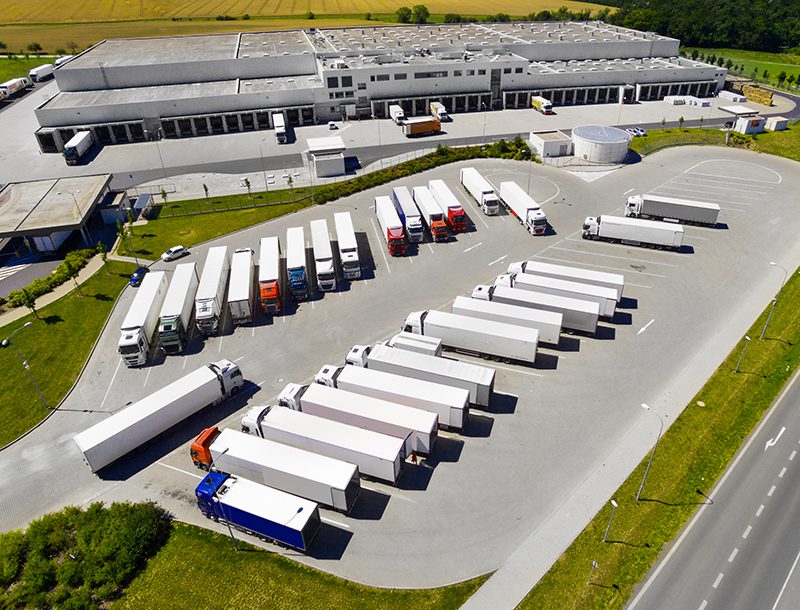
What You Need to Know About Distribution Center Security
Conducting a Physical Security Risk Assessment for a Distribution Center
Many distribution center owners are less than aware of all the security risks their organization faces and can be unfortunately surprised when a security breach happens. With planning, it’s easier to avoid this situation. Luckily, a physical security assessment is do-able and should be part of your distribution center security strategy.
There are two types of physical security assessments, individual and third-party. If you are a small operation, you can run a basic physical security assessment that can involve:
- Checking security measures like CCTV and locks are working.
- Ensuring system software is up to date.
- Checking the security of the facility’s access points.
- Assessing the need for additional measures, such as fencing or security guards.
The third-party physical security assessment involves a contractor sending a security expert to the distribution center to assess the security risks it faces. The assessor will look at several determining factors, such as geographical location, current security protocol, security infrastructure, and the crime levels in the local area.
Third-party contractors will often have resources at their disposal that your business does not. For example, physical security assessors will speak to smaller police departments to discuss response times when a crime occurs.
Penetration testing is a method that allows physical security assessment experts to see vulnerabilities in a company’s security net. These tests could involve running hacking tests on systems or actively looking for ways criminals could get access into your distribution center.
Reinforce Entry Points – Steel security doors are mandatory and can help make it significantly harder for would-be criminals to enter your site.
Secure Vehicle Access Points – Goods drop off locations and loading bays are easy targets for theft, especially opportunistic thieves. A strong security setup, including CCTV and limiting access can help better protect these vulnerable areas.
Physical security risk assessments are usually bespoke depending on your distribution center security requirements. However, there are some universal tasks that will always be a part of the assessment:
- Review of on-site security
- Risk identification
- Threat probability assessment
- Local crime analysis
- Review of security compliance methods
- Review of electronic security
- Review of manned security
- Review of architectural security
- Weakness identification for current security program
- Software and system reviews
Distribution Center Security is Important
If you develop a warehouse security checklist and know how to conduct a physical security assessment, your distribution center will be ready to prevent any crimes befalling it. Robust security is often ignored by warehouse operators, especially those of a small business. However, a strong distribution center security framework is a sound investment that will protect a warehouse over the long term. Get in touch with our team at B.I.G. Enterprises to learn how our prefabricated security booths can help safeguard entry to your business. Call today for a free quote.
What You Need to Know About Distribution Center Security
Distribution centers are often in the crosshairs of those who view them as a soft target for theft, burglary, and vandalization. For organizations that operate warehouses and distribution centers, this is a major problem. Important merchandise and stock are at risk, which makes distribution center security vital to your operations.
An unfortunate reality is your distribution center is often more at risk from internal theft than it is external burglary. Company employees, insiders, and contractors have access to your warehouse, and some may see an opportunity for crime. That does not mean you should be paranoid of every employee or guest, but it highlights how valuable an efficient distribution center security setup can help.
When developing a distribution center security strategy, creating a warehouse security checklist and knowing how to conduct a physical security risk assessment are both important.
Compiling a Warehouse Security Checklist
When working on a distribution center security plan, it’s impossible to cover every base. No single measure will ensure you’re safe from theft. However, by making some good decisions, you can cover as many holes in your security as possible and minimize the risk of loss.
Below is a warehouse security checklist that can provide a security safety net over your distribution center.
General Security Measures
CCTV – Should never be your only security measure but remains important.
Robust Locks – Needless to say, you need to ensure doors and other entry points can be securely locked.
Lighting – A well-illuminated building exterior can sometimes be enough to put off thieves.
Limit Access – It’s best to restrict access to your warehouse and separate visitors from staff, especially on the distribution side. Well-designed security booths help control access 24/7 while providing comfort for your security staff.
Physical Security Measures
Stock and Inventory – While the overall security of your warehouse is important, the focus should be on protecting your stock and inventory. Security guards that patrol the distribution center and security cages are two ways to help protect your assets.